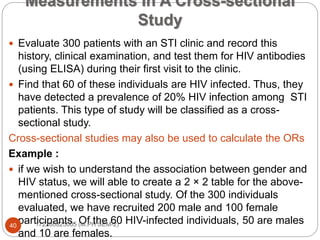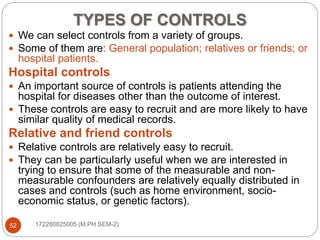An observational study observes subjects without intervening. A cohort study follows groups over time to compare outcomes based on exposure. This document defines and provides examples of cohort studies. It describes their design, strengths like establishing temporality between exposure and outcome, and ability to study multiple outcomes from one exposure. Examples include Framingham Heart Study, Swiss HIV Cohort Study, and a Danish study on psoriasis and depression.
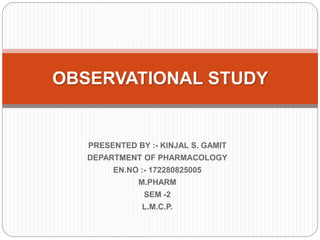

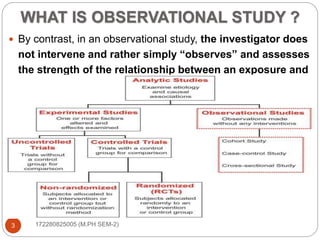
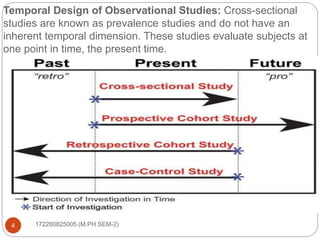









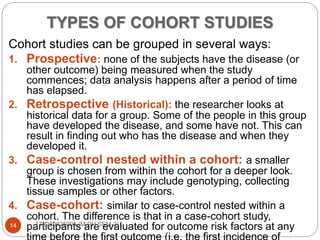
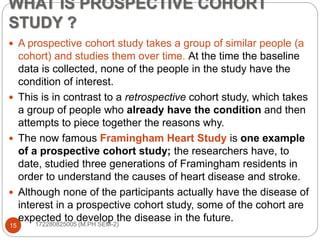












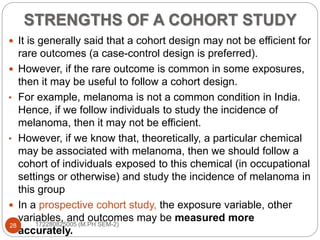







![DESIGN OF CROSS-SECTIONAL
STUDY
After the entry into the study, the participants are measured
for outcome and exposure at the same time [Figure ].
The investigator can study the association between these
variables. It is also possible that the investigator will recruit
the study participants and examine the outcomes in this
population. The investigator may also estimate the prevalence
of the outcome in those surveyed.
36 172280825005 (M.PH SEM-2)](https://image.slidesharecdn.com/observationalstudy05-180408043159/85/Observational-study-36-320.jpg)

![EXAMPLES OF CROSS-SECTIONAL
STUDIES
2.HIV and male sex workers (Shinde et al., 2009)
The authors presented a cross-sectional analysis to assess
the prevalence of HIV and risk behaviors in male sex
workers. They also evaluated the association between HIV
and sociodemographic factors.
The data were collected by interviewer-administered
questionnaires (for sociodemographic and behavior data),
clinical evaluation for sexually transmitted infections (STIs),
and serological evaluation for STIs (including HIV).
The authors reported that the prevalence of HIV in male sex
workers was 33%.
• They also found that male-to-female transgendered people
were significantly more likely to be HIV-infected compared
with males (odds ratio [OR]: 3.5, 95% confidence intervals:
1.0, 11.7).
Similarly, they also found that HIV prevalence was higher
among those in whom sex work was the main occupation
compared with those in whom sex work was not the main
occupation (40% vs. 7%, P = 0.02).
38 172280825005 (M.PH SEM-2)](https://image.slidesharecdn.com/observationalstudy05-180408043159/85/Observational-study-38-320.jpg)

